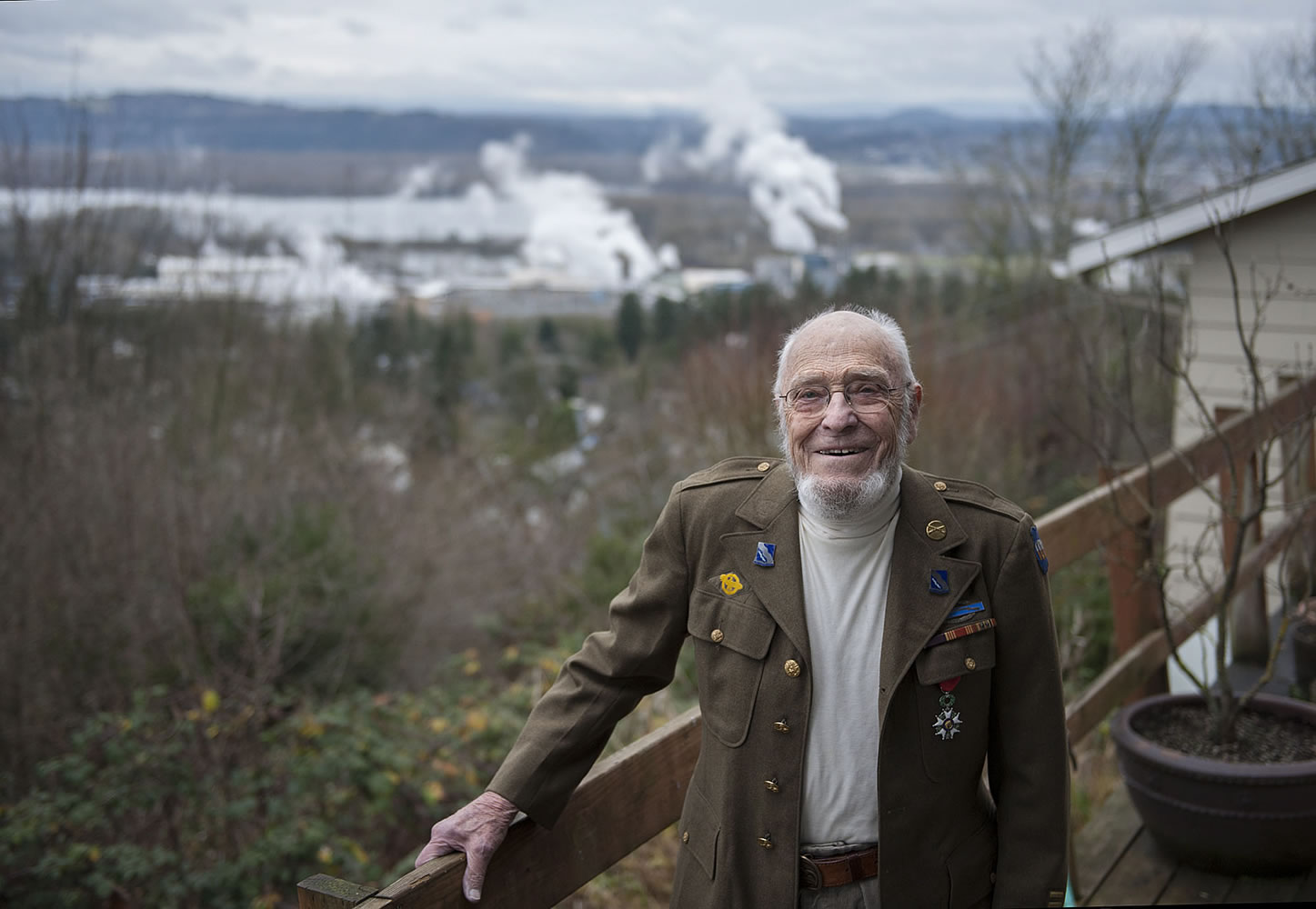CAMAS — There was a notable entry in Dr. Ed McAninch’s medical résumé before he even attended med school: It’s when he was a patient.
To be more precise, McAninch was a casualty. He was wounded in the leg by a burst from a German mortar shell during World War II, and that actually played a role in McAninch becoming a doctor.
After the war, McAninch took advantage of a law designed to provide rehabilitation for disabled vets. It was similar to the G.I. Bill that put millions of veterans through college, but the focus was on vocational training.
“When I was wounded, I had a 35 percent service-connected disability,” he said. When he accessed the rehabilitation benefits, “I was able to stretch that through medical school.”
Those post-war benefits resulted in McAninch’s 40-year career as a family physician in Camas.
McAninch retired from family practice almost 25 years ago. But earlier this month, there was another distant echo of his WWII service. McAninch became the most recent Clark County veteran to receive the Legion of Honor medal from France. It was presented in Portland by honorary consul Françoise Aylmer, the French government’s representative in Portland.
Now a knight
The medal is France’s way of thanking Americans who helped liberate Europe; its recipients now are Knights of the Legion of Honor.
Seventy years ago, the soldiers of McAninch’s 398th Infantry Regiment earned an even more colorful title. Part of their push through Europe included taking the fortified town of Bitche. It anchored the south end of France’s Maginot Line, and was taken over by German defenders after the French capitulated.
It was a formidable challenge for the men of the 398th. Taking the strong point earned them a Presidential Unit Citation, as well as a nickname.
“We were the Sons of Bitche,” said McAninch, who was studying engineering at what now is Carnegie Mellon University in Pittsburgh when he was drafted in 1944.
Before he was wounded, McAninch helped another GI receive our nation’s top military award: the Medal of Honor.
On Nov. 23, 1944, Lt. Edward Silk led his weapons platoon up to a French farmhouse where a German sentry was standing guard.
“We learned later it was a high-value target, a headquarters of some sort,” McAninch said.
After the platoon traded machine-gun fire with Germans inside the house for several minutes, Lt. Silk figured it was time for a direct assault.
“The lieutenant decided he would take a sackful of hand grenades,” McAninch said.
Provided covering fire
“I was giving him covering fire with a .30-caliber light machine gun” as Silk sprinted up to low stone wall in front of the house. Dashing right up to the side of the house, he threw a grenade through a window, silencing one German machine gun.
As McAninch and other men in the platoon maintained their fire, Silk moved to another position and killed another two-man gun crew with more grenades, according to the Medal of Honor citation.
“They decided to surrender,” McAninch, 90, said.
McAninch was wounded a couple of weeks later.
“We had just finished digging in for the night. It was an air burst. A mortar shell hit some trees and I was hit by a shell fragment.”
It could have been worse, McAninch pointed out.
“The usual drill is, you dive feet first into the hole. For some reason, I decided I’d better go in head first. So my legs were exposed instead of my head.”




